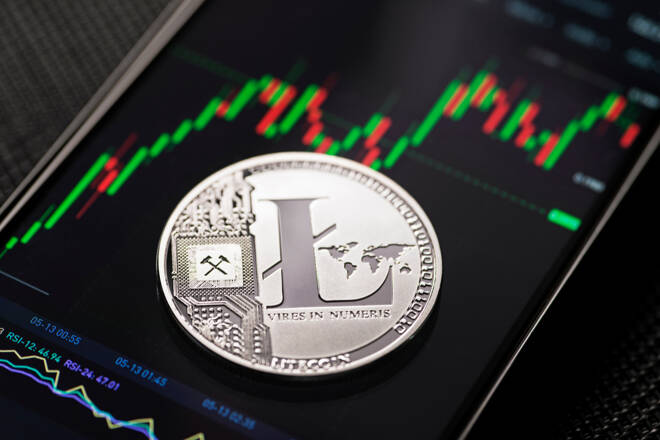Advertisement
Advertisement
Litecoin Price Outperforms Bitcoin with 27% Gains: This $170M Signal Poses Major Risk
By:
Key Points:
- Litecoin (LTC) price broke above $62 on Tuesday Aug 13, stretching its gains over the last 8-Days to 27%
- Since Aug 7, Whale Transactions on the Litecoin network has declined $170 million.
- Despite active upward momentum, Technical indicators suggest LTC price could struggle to breach the $65 resistance.
Litecoin Price Analysis
LTC price broke above $62 on Tuesday, August 13, marking a 27% increase over the past 8 days despite significant market volatility.
However, on-chain data reveals a concerning decline in whale demand for LTC, which now threatens the sustainability of the rally.
Russia’s New Crypto Law Propelled Litecoin into a 27% Rally
Litecoin price managed to shake off the August 5 market crash, recovering swiftly amid negative global market swings. The recovery phase was accelerated by Russia’s decision to legalize cryptocurrency mining on August 8.
Enthusiasts hailed this as a bullish development, particularly for major Proof of Work (PoW) coins such as Litecoin and Bitcoin.
Remarkably, Litecoin has outperformed Bitcoin in the recent market rebound. On August 13, Litecoin peaked at $63, reflecting a 27.3% gain over the past 8 days. During the same period, Bitcoin has managed only a 23% rebound from the August 5 crash, with its price hovering around $60,900 as of August 13.
This indicates that Litecoin investors responded more positively to Russia’s announcement compared to Bitcoin traders.
However, the recent market rebound may be short-lived as on-chain data indicates a declining interest among large investors.
Whale Demand for Litecoin has Declined by $170 Million
While Litecoin’s recent rally has been impressive, whale investors’ reaction to these market developments has been less enthusiastic. According to data from IntoTheBlock, large transactions, a proxy for whale activity, have decreased during the rally.
Specifically, whale transactions for Litecoin have declined from $3.01 billion to $2.91 billion between August 7 and August 13, a reduction of $170 million.
This decline in whale demand is a red flag for Litecoin’s sustainability above the $62 level. Large institutional investors play a crucial role in providing the liquidity needed to sustain price rallies.
With their declining participation, Litecoin faces the risk of accelerated downward volatility, particularly if this trend persists. The failure to break above the $65 resistance level could result in a prolonged correction phase, potentially driving prices back towards critical support levels.
LTC Price Forecast: Bulls Must Watch $60 Support
Despite the recent upward momentum, technical indicators suggest that Litecoin may struggle to maintain its gains. The Relative Strength Index (RSI) currently stands at 46, indicating that the buying pressure is weakening. Additionally, the Bollinger Bands are narrowing, which often precedes periods of reduced volatility or potential reversals.
If Litecoin fails to close above the $65 resistance, the bullish momentum could fade, triggering a decline towards the $60 support level.
This level aligns with the lower Bollinger Band, making it a crucial point for the bulls to defend. A break below $60 could open the door for a further decline, with the next significant support zone around $53.91.
In summary, while Litecoin has outperformed Bitcoin and the broader market in the past week, the declining whale demand presents a significant risk to its rally.
Without a significant improvement in whale demand, Litecoin price could struggle to break above .Traders should monitor the $60 support closely, as a breakdown below it could put bears regain control of the market momentum.
About the Author
Ibrahim Ajibadeauthor
Ibrahim Ajibade Ademolawa is a seasoned research analyst with a background in Commercial Banking and Web3 startups, specializing in DeFi and TradFi analysis. He holds a B.A. in Economics and is pursuing an MSc in Blockchain.
Did you find this article useful?
Latest news and analysis
Advertisement
